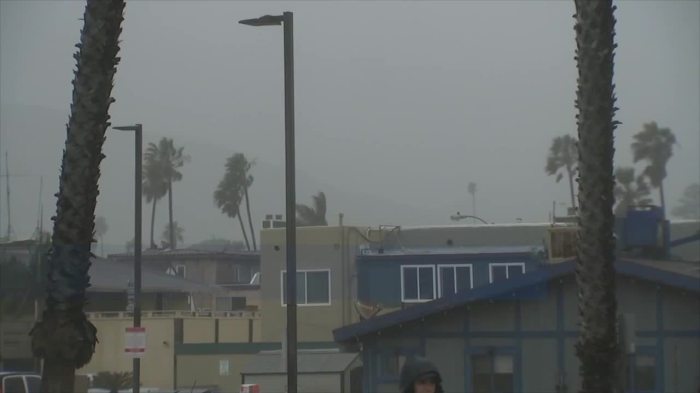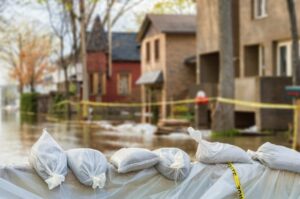
Flood insurance for coastal homes is a critical safety net for homeowners living in areas prone to flooding. As climate change intensifies weather patterns, coastal residents face increasing risks of flooding, making this type of insurance not just a precaution but a necessity. Understanding the various policies available and their significance can empower homeowners to protect their investments and ensure peace of mind.
This article delves into the intricacies of flood insurance, exploring the types of coverage available, common misconceptions, and the essential steps to secure a policy. By shedding light on these aspects, we hope to equip homeowners with the knowledge needed to navigate their flood insurance options effectively.
Understanding Flood Insurance for Coastal Homes

Homeowners in coastal regions face unique risks, particularly from flooding, making flood insurance an essential safeguard. With rising sea levels and increasingly severe weather patterns, having a reliable insurance policy can provide peace of mind and financial security against potential disasters. Flood insurance is not just a precaution; it can be the difference between recovery and financial ruin after a flood event.Flood insurance policies cover damages that standard homeowner’s insurance typically does not address.
Understanding the types of coverage available is crucial for homeowners to ensure that they are adequately protected. The Federal Emergency Management Agency (FEMA) offers the National Flood Insurance Program (NFIP), which provides two main types of coverage: building property coverage and personal property coverage. Building property coverage protects the structure of the home, including its foundation, electrical systems, and plumbing, while personal property coverage covers personal belongings, such as furniture and electronics, within the home.
Types of Coverage Available
It’s important to recognize the different coverage options available under flood insurance policies. Homeowners should be aware of the distinctions to select a policy that fits their needs.
- Building Property Coverage: This includes coverage for the physical structure of the home, including walls, floors, and any built-in appliances. It generally provides coverage up to $250,000 for residential properties.
- Personal Property Coverage: This covers personal belongings inside the home, with a limit of up to $100,000. Items such as clothing, furniture, and electronics fall under this category.
- Add-ons and Endorsements: Homeowners can enhance their policies with additional coverage options, such as increased limits on personal property or coverage for basement improvements.
Understanding these coverage types helps homeowners tailor their policies to their specific needs, ensuring they have the right protection in place.
Common Misconceptions About Flood Insurance
Several misconceptions exist regarding flood insurance, which can lead to inadequate preparation for potential flooding. Clarifying these misunderstandings is essential for coastal homeowners.
- Flood Insurance is Only for High-Risk Areas: Many believe that only properties in designated high-risk flood zones require flood insurance. However, flooding can occur in areas considered low to moderate risk, making insurance beneficial for all coastal homeowners.
- Homeowner’s Insurance Covers Flood Damage: A common myth is that standard homeowner’s insurance covers flood-related damages. In reality, most policies exclude flood coverage, necessitating a separate flood insurance policy.
- Flood Insurance is Expensive: While costs can vary based on location and property value, flood insurance can be more affordable than many homeowners realize. Additionally, federal assistance programs may help subsidize premiums for qualified homeowners.
It’s crucial for homeowners to educate themselves on these misconceptions, as understanding the realities of flood insurance can lead to better preparedness and financial security.
Comparing Flood Insurance with Other Insurance Types
Understanding the differences between various types of insurance is crucial for homeowners, especially those in flood-prone areas. Flood insurance is a specialized type of coverage aimed at addressing specific risks associated with flood damage, while other insurance types like health, dental, and disability insurance serve different purposes. This discussion will highlight the key differences between flood insurance and these other insurance types, emphasizing their unique coverage scopes.
Differences Between Flood Insurance and Health Insurance
Flood insurance and health insurance cater to fundamentally different risks and needs. Flood insurance is designed to protect homeowners from losses due to flooding caused by natural disasters, heavy rainfall, or other water-related incidents. It specifically focuses on property damage and may include coverage for belongings within the home. Conversely, health insurance is a financial agreement that helps cover the cost of medical care.
It provides coverage for services like hospital stays, outpatient care, prescription medications, and preventive services. The key difference lies in the nature of what is being insured; one is focused on property, while the other is centered on health and medical expenses.
Differences in Coverage Scope: Dental Insurance and Disability Insurance
Both dental and disability insurance have distinct coverage scopes when compared to flood insurance. Dental insurance generally covers preventive and restorative dental work, such as routine check-ups, cleanings, fillings, and sometimes orthodontics. This type of insurance aims to maintain oral health and cover expenses associated with dental care.Disability insurance, on the other hand, provides income replacement for individuals unable to work due to a disability.
It ensures financial security by compensating a portion of the lost income during the period of disability, rather than covering any physical assets or property damage. In summary, while flood insurance covers property damage from flooding, dental and disability insurance focus on health and income protection, respectively.
Comparison Table of Coverage Features
The following table illustrates the coverage features of flood insurance, health insurance, dental insurance, and disability insurance. This comparison highlights their different scopes and benefits.
| Insurance Type | Coverage Focus | Typical Benefits | Exclusions |
|---|---|---|---|
| Flood Insurance | Property damage from flooding | Repairs for structural damage, replacement of belongings | Flooding from sewer backup, maintenance issues |
| Health Insurance | Medical expenses | Hospital visits, prescription drugs, preventive care | Cosmetic procedures, non-covered treatments |
| Dental Insurance | Oral health | Routine exams, fillings, sometimes orthodontics | Cosmetic dentistry, certain advanced procedures |
| Disability Insurance | Income protection during disability | Income replacement, rehabilitation services | Pre-existing conditions, short-term disabilities |
Steps to Secure Flood Insurance for Coastal Properties
Purchasing flood insurance for coastal properties is an essential step in protecting your investment from potential flood-related damages. The process involves several key steps that ensure you’re adequately covered and informed about the risks associated with living in flood-prone areas.To apply for flood insurance effectively, you need to follow a structured approach that takes into account your specific needs, local regulations, and the unique characteristics of your property.
This guide provides a step-by-step framework to navigate the process, as well as insights into the factors that may affect your insurance premiums.
Step-by-Step Guide to Applying for Flood Insurance
The following steps Artikel the process of securing flood insurance for your coastal property:
- Evaluate Your Flood Risk: Begin by assessing your property’s flood risk using FEMA’s Flood Insurance Rate Maps (FIRMs). These maps provide essential information about the flood zones in your area.
- Understand Policy Options: Familiarize yourself with the different flood insurance policies available, such as the National Flood Insurance Program (NFIP) and private insurance options. Each has distinct coverage limits and premiums.
- Gather Required Documents: Compile necessary documents, including proof of property ownership, flood zone determination, and any existing insurance policies.
- Contact Insurance Agents: Reach out to licensed insurance agents who specialize in flood insurance. They can provide personalized recommendations based on your needs and local market conditions.
- Obtain Quotes: Request quotes from multiple insurers to compare coverage and premiums. Consider the policy limits, deductibles, and the specifics of what is covered.
- Complete the Application: Once you select a policy, fill out the application accurately, providing all required information. Be honest about your property’s condition and any previous claims.
- Review Your Policy: Carefully read through the terms of your policy. Pay attention to exclusions, coverage limits, and any endorsements you may need to add for enhanced coverage.
- Make Payment: After your application is accepted, make your initial payment to activate the policy. Keep a copy of the policy documents in a safe place.
Factors Affecting Flood Insurance Premiums
Various factors influence flood insurance premiums, and understanding these can help you mitigate costs effectively. The main determinants include:
The location of your property, the elevation above flood level, the type of construction, and the history of flood claims all play a significant role in determining your premium.
The following list highlights some key factors that can affect your premiums:
- Flood Zone Designation: Properties in high-risk zones (such as Zones A and V) usually have higher premiums compared to those in low-risk zones (like Zone X).
- Building Elevation: Properties elevated above the Base Flood Elevation (BFE) may benefit from lower premiums.
- Construction Type: The materials and methods used in your home’s construction can impact premium rates. For example, homes built on pilings generally have lower premiums.
- Claims History: A history of frequent flood claims can result in higher premiums, as insurers view it as a higher risk.
- Discounts and Credits: Many insurers offer discounts for policyholders who implement flood mitigation measures, such as installing flood vents or elevating utilities.
Essential Documents Required for Purchasing Flood Insurance
Having the right documentation is crucial for a smooth application process. The following list Artikels the essential documents you’ll need when applying for flood insurance:
- Proof of Property Ownership: This can be in the form of a deed or mortgage statement.
- Flood Zone Determination: A letter or official document indicating your property’s flood zone status.
- Previous Insurance Policies: Any existing homeowners or flood insurance policies should be provided for reference.
- Property Information: Detailed information about your property, including its age, type, and number of floors.
- Inspection Reports: If your home has been recently inspected for flood risk, include the report to support your application.
Closing Notes

In summary, navigating flood insurance for coastal homes is not just about compliance; it’s about safeguarding your future. The importance of understanding coverage options, debunking myths, and following the correct steps for securing insurance cannot be understated. By proactively addressing these factors, homeowners can take significant strides toward protecting their properties against the inevitable challenges posed by flooding.
Questions Often Asked
What is flood insurance and why do I need it?
Flood insurance provides coverage for damages caused by flooding, which is not typically included in standard homeowners insurance. It’s essential for homeowners in flood-prone areas to protect their investments.
How can I lower my flood insurance premiums?
You can lower your premiums by elevating your home, obtaining a flood zone determination, and taking mitigation steps to reduce flood risk.
Does flood insurance cover all types of flooding?
Flood insurance typically covers overland flooding but may have exclusions for certain types of water damage, such as that resulting from sewer backups unless additional coverage is purchased.
How long does it take for a flood insurance policy to take effect?
Can I get flood insurance if I live in a low-risk area?
Yes, homeowners in low-risk areas can still obtain flood insurance, and it can be a wise decision as flooding can occur unexpectedly in any area.







